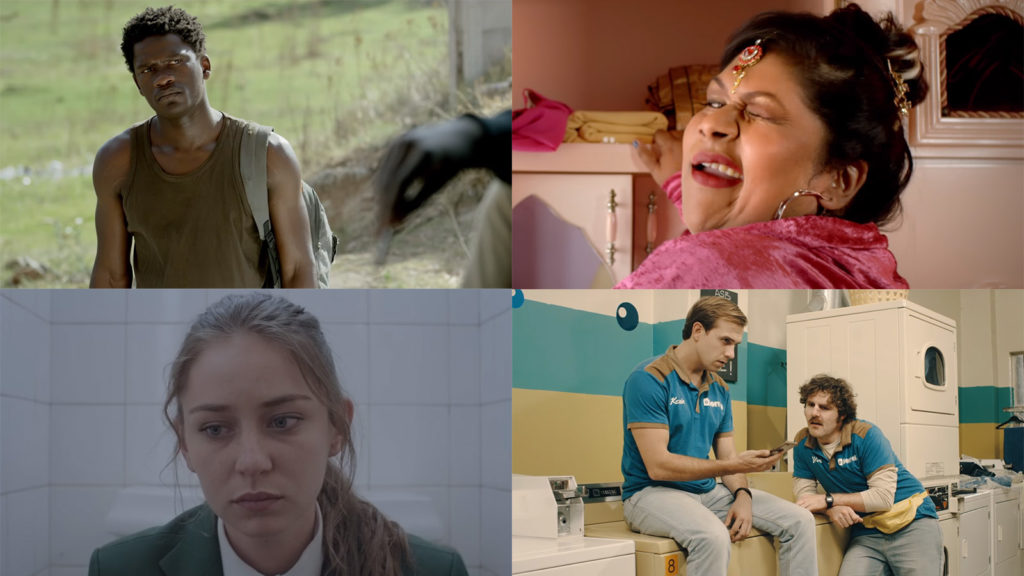OpenAI has launched GPT 5.2, a major model upgrade now available in both the API and ChatGPT. It is described as the company’s most…
Why is South Africa not watching South African movies?

You hear it all the time (at least in the hipster parts of Cape Town): support local. Wear locally-made clothes, buy fruit and veg from your local vendors. Whether these efforts are helping is unclear, but one area it isn’t? Local film.
Hollywood struggled last year with its worst summer season in over a decade. But it’s not just US films that are failing to reach an audience — South African ones are too.
Last year, the 24 South African films released in cinemas accumulated R44.5-million altogether. To put that into perspective, Despicable Me 3 made R46-million by itself. Fast and Furious 8 made R72-million.
So why aren’t people watching? For one: the films aren’t showing in as many cinemas. On average, the top 50 films of last year had around 96 prints. South African films averaged 30. What’s worse is that it seems like the industry is struggling to predict which films are going to do well.
These were the biggest movies in Southern Africa in 2017
Hollywood did not have a great 2017. During the US summer blockbuster season, South Africa took a 17% drop in revenue from 2016. The US didn’t fare that much better, and pundits began worrying the year would be disastrous for Hollywood. Read more…
The highest-grossing film of the year, family comedy Keeping Up with the Kandasamys, was shown in a below-average 26 cinemas and still managed to pull in R16.4-million. Afrikaans comedy Van der Merwe opened in 50 and barely mustered R618 000.
The number of screens showing a film is decided by two entities, the distributors and the buyers. When a film is completed, the producers either sell or lease it to distributors who then work with buyers like Ster-Kinekor and NuMetro to decide how many prints to sell of the film. (Prints used to refer to actual film rolls, but now it’s mostly used to refer to screens.)
The discrepancy between South African films’ prints and their subsequent earnings point to a disconnect somewhere in this process.
The graph above shows prints vs box office earnings. (You can click on Keeping up with the Kandasamys in the legend to hide it from the graph.) While it would make sense to be a straight line correlation (the wider the potential audience, the higher the revenue), it is instead a jumbled mess where films with around 32 prints could earn anywhere from R500 000 to R3.1-million.
Can distributors and buyers not predict which films will sell? Are they still banking on Leon Schuster-like comedies to perform well rather than the likes of the South African Indian Kandasamys?
Of course, a film’s performance has to do with multiple factors, but things like content or marketing come second to whether audiences have access to a film in the first place. It’s worrying that a) South African films are being screened at a staggeringly low rate and b) the industry can’t predict which films will do well, potentially quelling the extent of their success.
Accessibility aside, it seems that most South African films released in cinemas just aren’t appealing to South African audiences. Last year, runaway hit Keeping Up with the Kandasamys smashed the box office, making over four times more than the local film in second place — and ten times more than the others’ average of R1.2-million.
Afrikaans drama Vaselinetjie, with 38 prints, was the second-highest grosser with R3.6-million. In third spot was the film with the most prints (51), dark comedy Vuil Wasgoed (Dirty Laundry). The film made R3-million.
When you look at Kandasamys alongside the other South African films, it seems simple how it stands out: the film offers a celebratory glimpse at the underrepresented South African Indian community. And when the majority of the films released last year were either Afrikaans comedies or dark dramas, South Africans chose the lighthearted Indian family flick.
Here’s a clearer look at the genres sold to South Africans last year, and which they bought into:
Our audiences respond well to optimistic representation (Black Panther is another example) — but they also pay for escapism. Of the top 20 films of 2017 overall, 12 were high-budget action flicks like xXx: The Return of Xander Cage and Star Wars: The Last Jedi.
The homegrown films released last year were hardly escapist. Vaselinetjie is about a young woman ripped from her family and into an orphanage, Kalushi about the tragedy of freedom fighter Solomon Mahlangu, Nul is Nie Niks Nie (Zero Isn’t Nothing) about a young boy with Hodgkin’s lymphoma.
And worse: most of the films portrayed Afrikaans culture, and the ones that ventured out focussed on tragedy. These choices dramatically limit the potential local audience.
The issue is, most of our films are heavy, pulled down by a stark realism that South Africans reject even in international films — and the variety of colourful South African experiences are left off the screen.
South African realism is often linked to a limited budget — fantasy and sci-fi are expensive to make — but limiting ourselves to slapstick comedy and serious dramas only inhibits us further.
Because, yes, South African filmmakers hardly have the budget to make Black Panther — but the energy and playful fantasy is something they can hone. Keeping with the Kandasmys already kind of did — and it thrived.
South Africans are ready to see themselves celebrated on screen — so why isn’t the industry?

